With the help of food science, this authentic Turkish delight recipe from Narnia is as close to foolproof as a confectionery recipe can get. Perfectly chewy and sweet, "lokum" is traditionally vegan & gluten-free.
Read on to find out its fascinating history, as well as all the key tips and troubleshooting suggestions for Turkish delight.
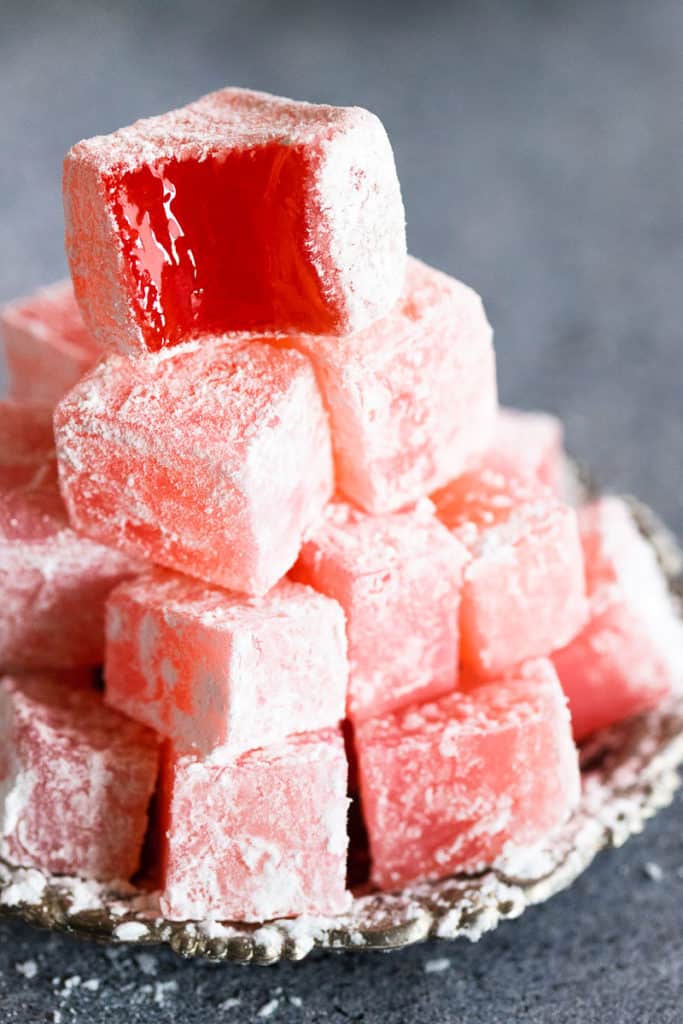
Jump to:
I've been trying to perfect this recipe for ages. The initial attempts were either too soft, too chewy, lumpy, or stretchy.
I realized a while later that this was a common experience shared online across many Turkish delight recipe pages for a significant number of confectionery enthusiasts.
After finally getting the recipe right consistently (took 13 trials of multiple batches!), I'm confident in all the directions and tips shared below.
If you decided to spend two hours and ingredients on a lokum recipe, taking an additional 10 minutes to read the details is a no-brainer to avoid likely headaches.
In particular, pay very close attention to directions on temperature, the method of incorporating starch, and the judging of doneness at the final stage. Let's begin!
🇹🇷 What is Turkish delight?
Turkish delight, or lokum — pronounced "low-COOM", is a candy made with starch and sugar. The most common flavor is rosewater but many other varieties such as lemon, mastic, orange, as well as plain (lokum on its own does have a great taste!) are popular in Turkey. Some of them also contain chopped nuts or soapwort extract.
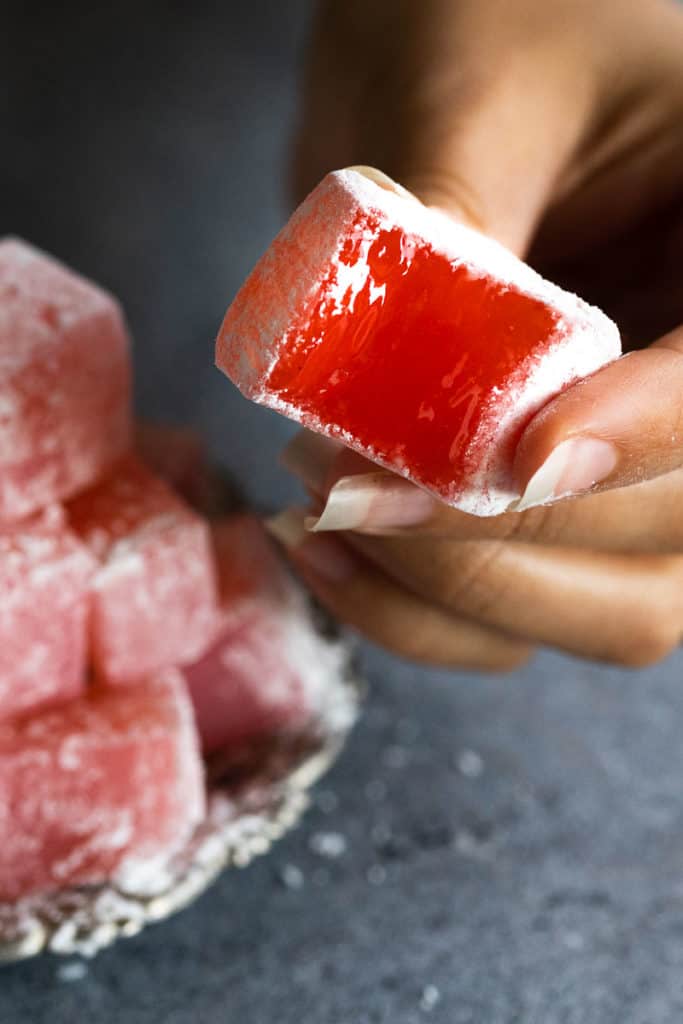
🌹 History of Turkish Delight
The Hotly Debated Origin of Lokum
We don’t know the definitive origin of Turkish delight. U.K. food historian Reay Tannahill suggests that the Persian confection "ahbisa" was the ancestor of today's lokum.
Although it was likely an anonymous recipe born in the Middle East, perhaps Persia, in the 15th century, other sources allege it was invented in the late 18th century in Istanbul.
It is claimed that the Sultan of the Ottoman Empire at the time, Abdülhamit I, craved a softer candy than what was available at his palace. A man of means, he summoned his confectioners and demanded a soft candy to satisfy his sweet tooth… and Turkish Delight was born.
The name in Turkish, "lokum", comes from “rahat-ul hulküm” in Arabic, meaning “comfort for the throat". Sounds exactly like what the Sultan was looking for.
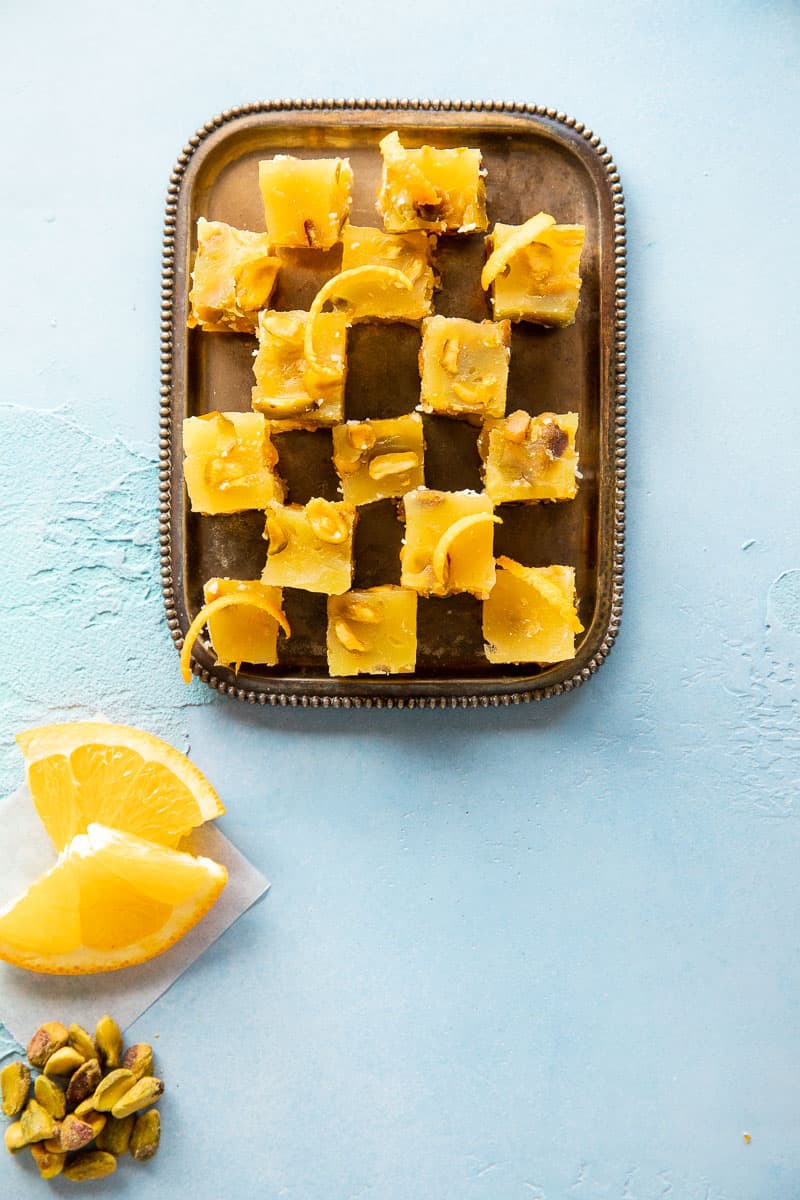
Another leading theory is that an independent confectioner named Hacı Bekir Efendi invented lokum of his own volition around the same time in the 18th century.
His candy store became quite famous in Istanbul, and Sultan Mahmud II made him Head Confectioner to the Ottoman Court.
Later in that century when scientists invented the modern refined sugar and cornstarch, Bekir Effendi changed his original recipe. He replaced grape molasses or honey with refined sugar, and flour with cornstarch: the binding agent that gives Turkish delight the distinct chewiness it is known for today.
Long story short, the most reasonable theory is that a candy very similar to lokum was invented anonymously sometime between the 14th and 16th centuries in the Middle East that used flour as the binding agent and molasses or honey as the sweetener.
Then in the 18th century, an Ottoman confectioner in Istanbul named Hacı Bekir Efendi, he replaced the ingredients with modern ones and created what we call Turkish delight today.

Why Did C.S. Lewis Write Turkish Delight into Narnia?
Later on in the 19th century, lokum made its way to the West when travelers who loved this exotic candy in Istanbul brought cases of it back to Britain.
Importation to England officially began in 1861, originally introducing it as “Lumps of Delight”. Thankfully, the name that ended up sticking was Turkish delight.
When C.S. Lewis started writing the Lion, the Witch, and the Wardrobe, the world looked very different. Because of World War 2, confectionery items were rationed in Britain.
By the time the book was finally published in 1950, the allowance was still half a pound of candy and chocolate per person per month—if you could afford it, of course.
That’s why it makes so much sense that Edmund Pevensie’s wish from the White Witch is a candy that is made almost entirely of sugar. Something luxurious and out of reach at the time.
Here is another fun fact on Lewis's fascination with Turkish culture: aslan directly translates into lion in Turkish!
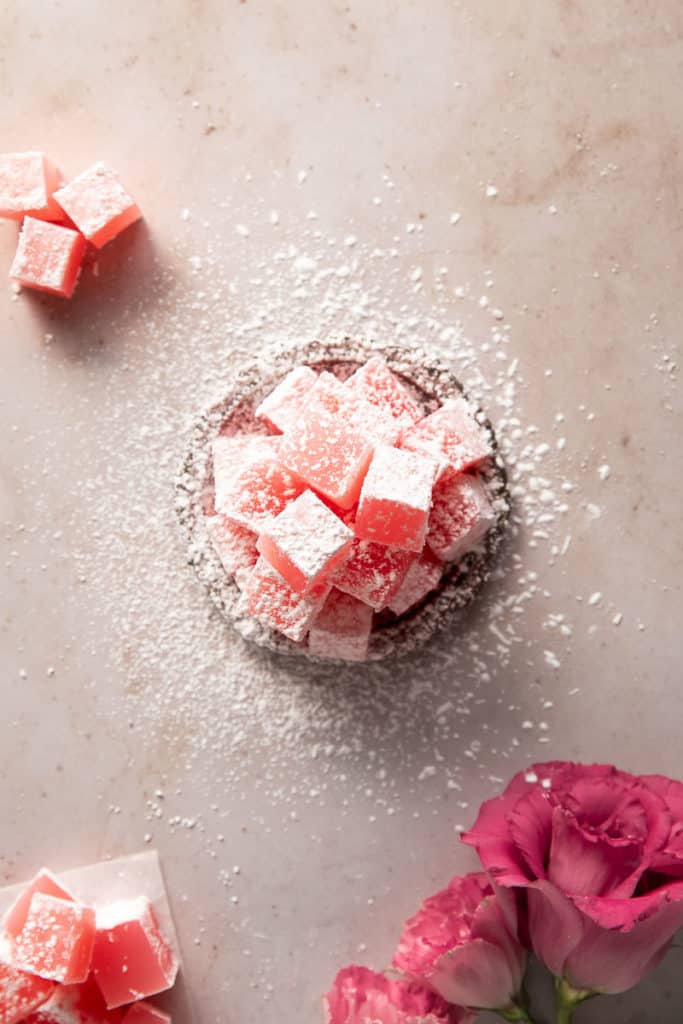
🎥 Turkish Delight Recipe Step-by-Step Video
Watch the detailed video on lokum's history and how to make three types of it here:
🥣 How to Make the Authentic Turkish Delight Recipe from Narnia
Makes 40 ~1-inch cubes, approximately 10 servings.
Ingredients
For Lokum:
- 350g (scant 2 cups) white sugar (See Note 1)
- 175ml (¾ cup) water (for syrup)
- 1.8g (¼ teaspoon) citric acid (See Note 2)
- 70g (½ cup + 1 tablespoon) cornstarch
- 500ml (2 cups + 5 teaspoons) water (for cornstarch)
- 1 ½ teaspoons rosewater (See Note 3)
- 10 drops of red food color (See Note 4)
For Cutting:
- 30g (¼ cup) cornstarch
For Dredging:
- 80g (⅔ cup) cornstarch
- 45g (⅓ cup) powdered sugar
Notes on the Ingredients:
- Make sure the sugar is the regular white variety as the less processed yellow-looking ones will make it difficult to judge the final steps of this recipe where we partially depend on the color.
- You may substitute citric acid with either the same volume of cream of tartar, or x12 the volume of lemon juice. 1 tablespoon of lemon juice roughly equals ¼ teaspoon of citric acid.
- However, unlike citric acid or cream of tartar, lemon juice will impart some flavor to your Turkish delight.
- Rose is an acquired taste. Therefore, to some, too much rosewater in the delights may make them taste soapy or perfumy. If you believe you might be in this category, halve the volume of rosewater the recipe calls for and you'll get only the slightest hint.
- As written, the rose flavor in this recipe is quite muted—but certainly there to compliment the sugar. Feel free to increase the amount if you wish to have a more robust flavor. Not a rosewater fan at all? Try substituting with extracts: orange, mandarin, pomegranate, lemon, and mint are very common flavorings in Turkey.
- You could also try yuzu, almond, maple, cinnamon, root beer... sky is the limit. Be careful as extracts are often stronger than rosewater in the same amount. At least halving the volume would be a good idea.
- The intensity of food colors varies widely from brand to brand. I used Watkins (liquid), and the initial super bright red color got much paler a few days after lokum set—so you may want to go overboard with how much you add or use another brand in order to have a deep red color.
Instructions for Making the Authentic Turkish Delight Recipe from Narnia
1. Add the sugar, citric acid, and water into a heavy-bottomed pan and mix until the sugar dissolves.
2. Bring the mixture to a boil on high heat, then lower the heat down to a simmer and wait until the syrup reaches 250°F (hard ball stage, See Note 1). Make sure to adjust this temperature for your kitchen's altitude and observe the pan closely—a clipped candy thermometer will give the most reliable results. This should take 15-30 minutes depending on your stove's heat output.
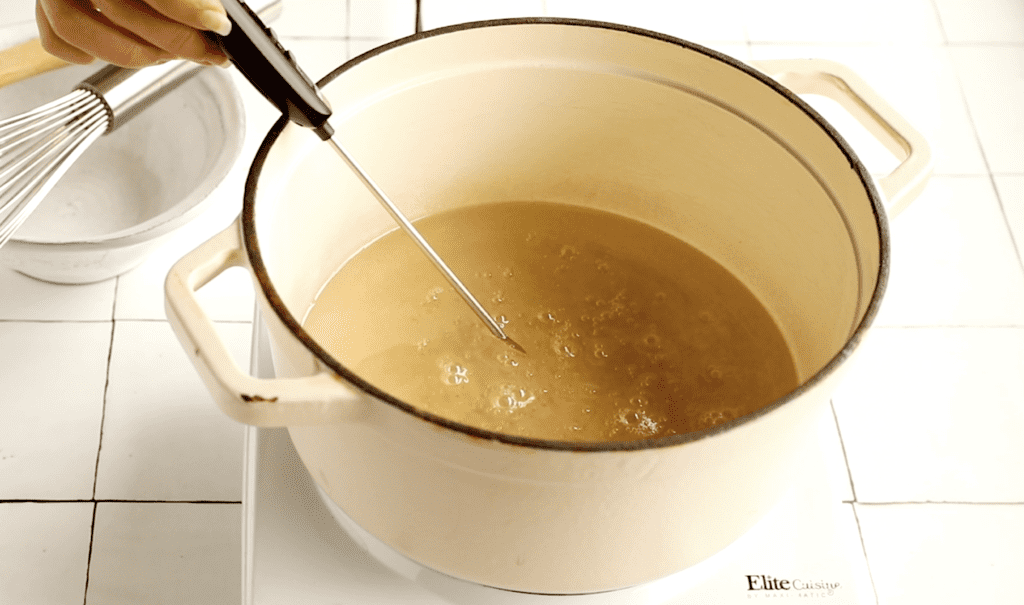
3. Meanwhile, prepare the cornstarch mixture by adding cornstarch and water to a jar. Close the lid and shake vigorously until there are no visible lumps of starch. Alternatively, thoroughly mix in a separate bowl.
4. Once the syrup reaches 250°F, turn off the heat and gradually add the just-shaken cornstarch mix into the pan, whisking continuously.
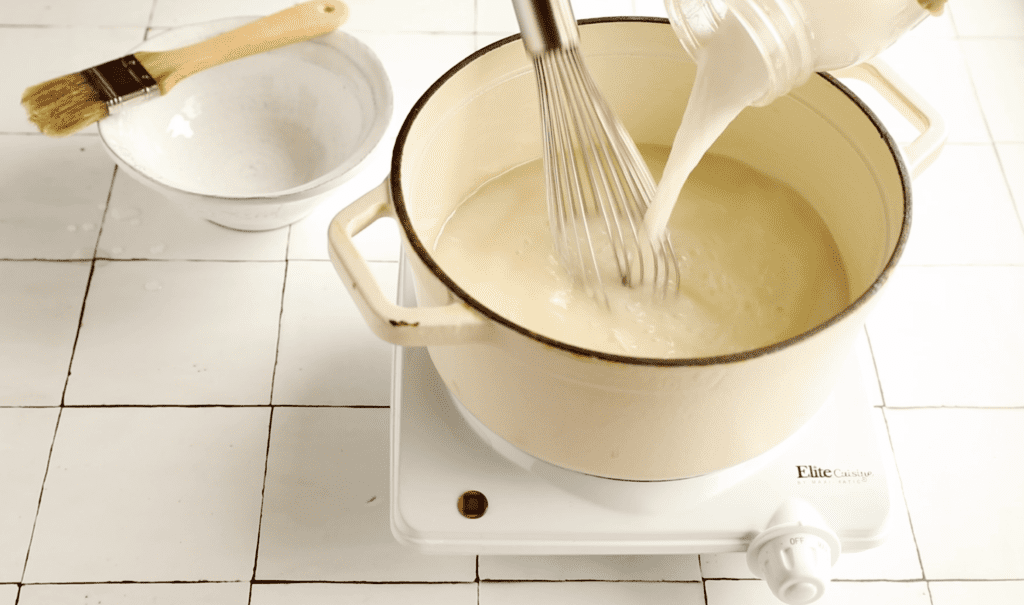
5. When all the cornstarch is incorporated, turn the heat on to medium-low and continue whisking until gelation. It should only take a few minutes for the mixture to thicken.
6. Once it’s thickened, put the heat on low to simmer, and make sure to mix it (See Note 2) about every 7-8 minutes to prevent it from sticking to the bottom. Be careful as the thickened mixture may splatter. Continue this process for 1-2 hours.
7. Prepare a mold by spreading a small amount of neutral oil into a container (See Notes 3 & 4).
8. To judge whether the mixture is done cooking, look for a relatively thick—but not gloopy—texture and a medium-dark shade of amber. Around the 1, 1 ½-hour mark, the mixture is usually very close to being done. This timeframe will depend on a variety of factors such as pan width, changing the ingredient amounts to make more/less lokum, and the stove's heat output. It can go up to 2 hours+, so make sure to judge by texture and color.
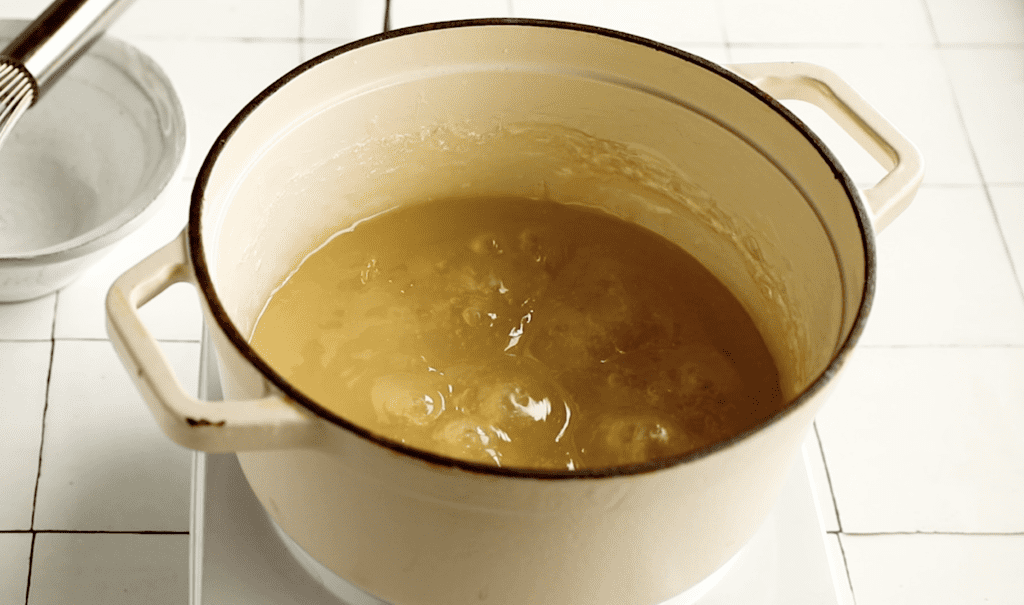
9. When the Turkish delight is done cooking, turn off the heat, and add the rosewater and food coloring. Mix, pour into the container, and set aside at room temperature for at least 5 hours—preferably a full day especially if you’re somewhere hot and humid.
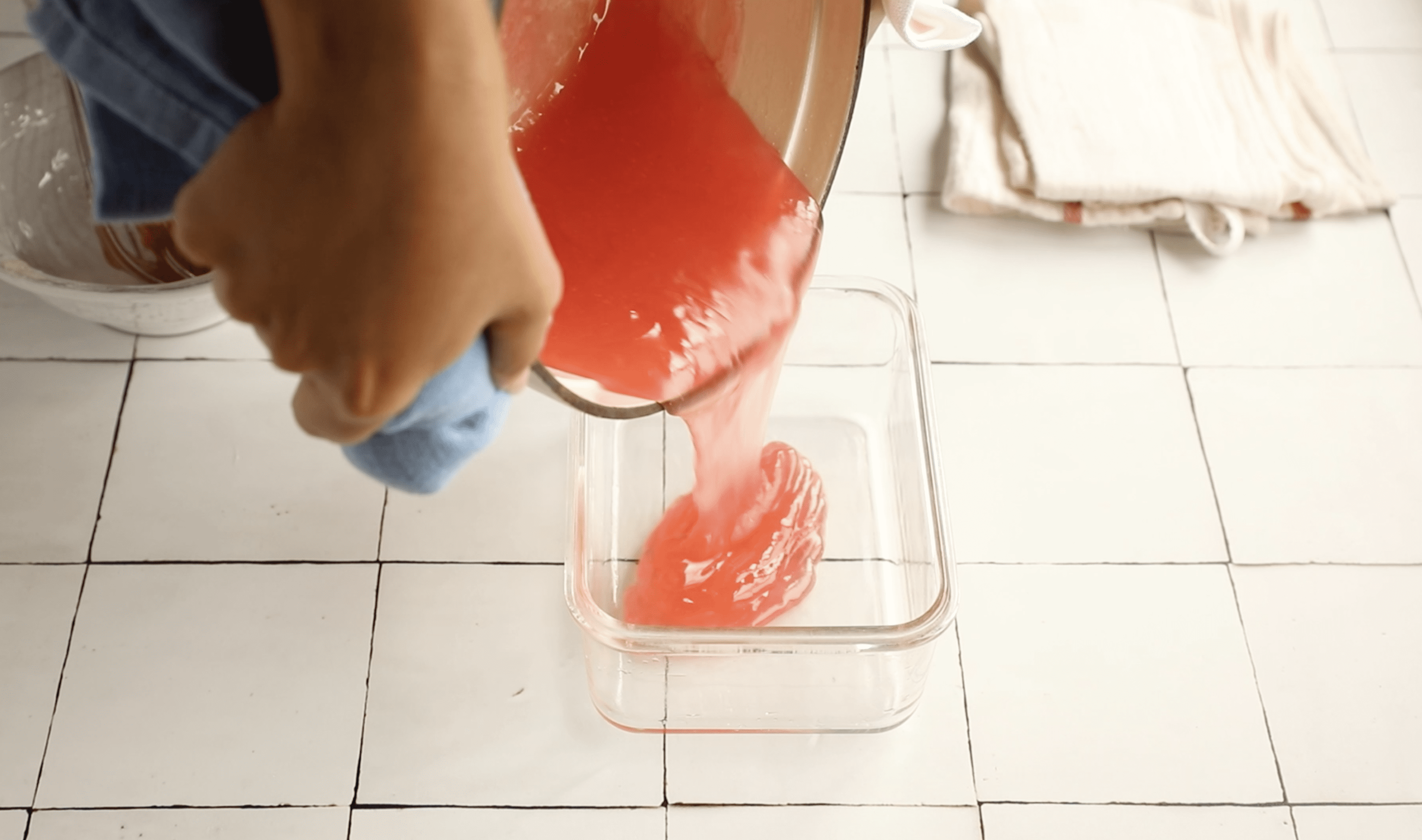
10. The next day, sprinkle cornstarch into the container then cut out a strip from the edge so that you can remove the entire slab. Sprinkle with more cornstarch, then cut into cubes.

11. Once they are cut, dredge the cubes in a mixture of cornstarch and powdered sugar.

12. To maximize the experience, serve with Turkish coffee and water on the side, which is the most common way people consume it in Turkey. Sandwiching the lokum between plain biscuits like Biscoff (or Petibör in Turkey) is really popular as well. These also make a great gift for Christmas. Enjoy!
Important Notes for the Turkish Delight Recipe
1. This is the most crucial part of the recipe. I can't recommend a candy thermometer enough, but in case you're set on making do without, use the cold water test. We’re looking for the hard ball stage: meaning that once you pour a small amount of the simmering syrup into cold water—it should form a hard but malleable ball between your fingers. You need to be very quick in doing this, because the heating rate accelerates very rapidly after about 220°F because of the high sugar concentration in the syrup. Anywhere up to 260°F is okay, but go above this and you will get hard candy without realizing after 2+ hours of cooking.
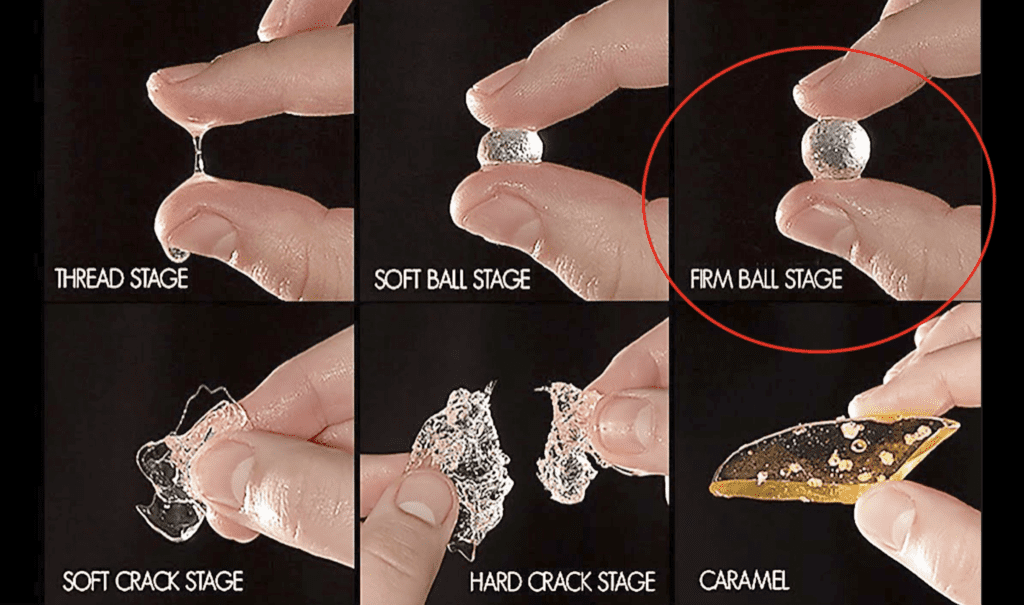
If you are using a candy thermometer, testing it on boiling water to ensure it works correctly is not a bad idea. Additionally, make sure to factor in the altitude of your kitchen. For instance, if you are making this in Denver, CO, you'll be looking for 240°F instead 250°F. Each 500 ft increase in elevation causes water to boil at 1°F lower.
2. Make sure to be gentle while stirring after gelation. Any forceful whisking may cause the starch chains to disintegrate, causing a thinned-out consistency. However, a little thinning after the initial thickening is expected whenever cornstarch gelates.
3. A 5in x 7in glass container used for the original recipe yields 40 ~1-inch cubes of Turkish delight in one layer. However, feel free to use whatever size container is available to you as long as its surface area is smaller than 35 in2. Otherwise, the layer may be too thin.
4. Some prefer to line the container with plastic wrap instead of using oil. While this will help in removing the slab of lokum, it also creates numerous creases on the surface. Therefore I don't prefer it.
🍬 Storage: Best Way to Preserve Lokum
Turkish delight stores exceptionally well. I find that the best time to enjoy lokum is two days after preparing them. This gives it enough time for the delicate chewiness to develop.
After the initial drying out, I recommend storing them in the refrigerator covered with all the leftover cornstarch & powdered sugar mix from dredging. Prior to serving, make sure to bring Turkish delights back to room temperature.
A few caveats regarding storage:
- If everything went right, the finished delights should have a quite low proportion of water, 15% at a maximum. These delights will keep for many months at room temperature (dry environment away from sunlight) or in the refrigerator. I've even had year-old Turkish delight that got lost behind miso paste in our refrigerator before; it was perfectly fine to eat but wasn't as soft. All to say, expect the sensory qualities of lokum to deteriorate after a few months.
- However, in case your lokum turned out more watery than this (likely due to not heating the syrup to hard ball, whisking the mixture too vigorously after gelation, or taking it off the heat too quickly)—they will need to be consumed quickly, ideally within a week. Store them in the refrigerator covered with all the leftover cornstarch & powdered sugar mix from dredging, in an airtight container since this type of lokum will have an increased propensity for contaminants, which may introduce foodborne illnesses.
- If your Turkish delight has nuts, make sure to store them in the refrigerator.
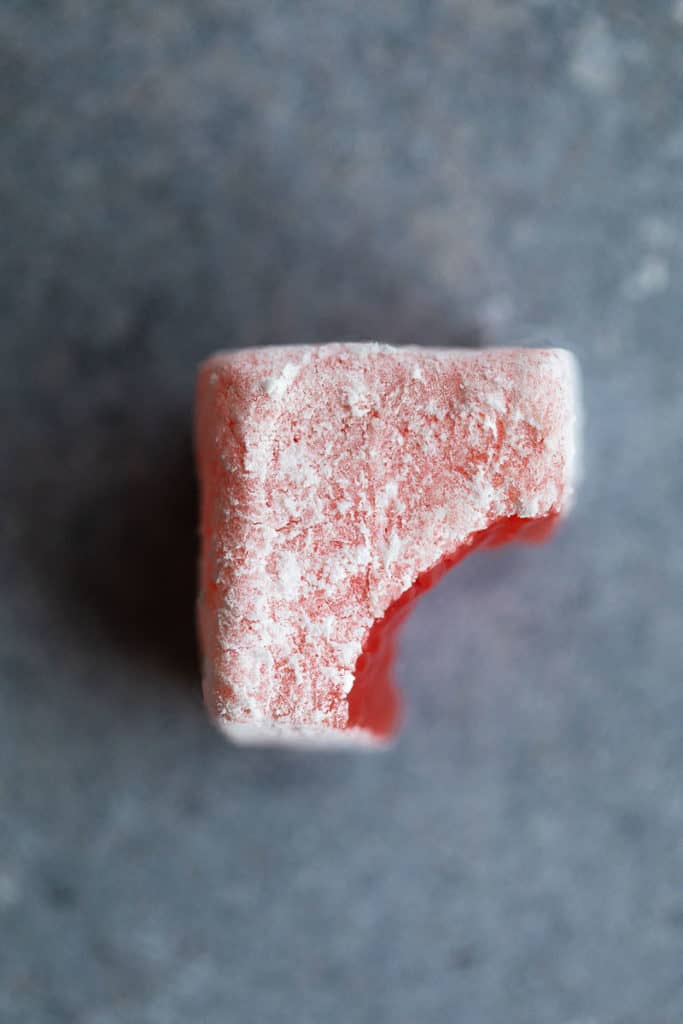
❓ Recipe Troubleshooting & FAQ's
It is highly likely that one or a combination of the four happened:
i) the syrup wasn't brought to a high enough temperature at the beginning
ii) the final mix was taken off the heat way too early when the water content was still too high
iii) too much acid (citric acid, lemon juice, or cream of tartar) or too little starch was used accidentally
iv) the mixture was whisked too vigorously after gelation and the starch molecules disintegrated as a result
Unfortunately, there is no way to bring it back to the ideal texture especially if you're not sure what went wrong. To avoid wasting ingredients, you may use pectin to set the mixture at this point—but it won't really be a proper Turkish delight.
If you have citric acid or lemons, no. Potassium bitartrate (cream of tartar) does the same thing that citric acid does for this recipe: preventing sugar crystallization.
1 tablespoon of lemon juice roughly equals ¼ teaspoon of citric acid. However, this will depend on the lemon as each will have different proportions of acid. Additionally, note that, unlike citric acid, lemon juice will most likely impart some flavor to your Turkish delight.
In my experience, the step most susceptible to the formation of lumps is the combining of cornstarch with syrup, especially in recipes that instruct to heat the starch separately first. The below image shows what happens when the recipe fails at that step. This is completely avoidable by adding the cornstarch dissolved in water (ideally, shaken vigorously in a jar to prevent any clumps) gradually to your syrup.
If you already have a lumpy mix of lokum sitting on the stove as you're reading this, then the answer depends on one thing: can you realistically pick out all the lumps one by one? If you have say, above 20 of such lumps, I'd say start over and you'll be glad you haven't wasted a further two hours on the project. If it is possible to pick them out, then do so and continue on.
Anywhere from 250°F to 260°F is ideal. The higher limit brings a chewier texture, while the lower will be slightly softer. The reason I recommend 250°F is because of how easy it is to overheat the mixture past the hard ball stage. There really is no going back from hard candy—but if you're experienced, feel free to go for 260°F directly.
Technically, you could if you familiarize yourself with and are comfortable judging the steps of the recipe with the cold water test. However, once a syrup goes above 220°F, it gets considerably more difficult to control its temperature due to the lower percentage of water in the mix (see graph below from Harold McGee's "On Food and Cooking"). This means that you need to be extremely quick with the cold water test; otherwise, you're risking overheating to above 260°F and getting a hard candy without realizing it until you've spent 2-3 hours. I've been there, and it's no fun.
There is no perfect alternative. That’s because each type of starch is different and has its own distinctive proportions of starch molecule chains called amylose and amylopectin which result in different qualities, such as different gelation temperature ranges, consistency, or stability on prolonged heat.
Potato starch, for example, has a large number of attached phosphate groups, causing the starch chains to repel each other. This means that it doesn’t congeal very well upon cooling, which is something we rely on heavily while making Turkish delight. All in all, from looking at the below chart from, you guessed it, Harold McGee's "On Food and Cooking", I would pick arrowroot starch as the best alternative if required.
The citric acid largely takes care of this issue, but to guarantee it further, you may brush down the sugar particles left on the sides of the pan with a wet pastry brush.
Turkish delight (lokum) is a candy made with starch and sugar. The most common flavor is rosewater but many other varieties such as lemon, mastic, orange, as well as plain are popular in Turkey. Some of them also contain chopped nuts or soapwort extract.
99.9% of the time, yes, authentic plain Turkish delight is vegan and does not contain any animal products. There are caveats, however: the sugar used in them may have been filtered through bone char since most sugar production facilities still use that process.
Also, note that there are rare recipes on the web that use gelatin to set the dessert, but I personally wouldn't consider them as lokum. Additionally, some rare varieties contain clotted cream ("kaymak") sandwiched in lokum; these are supposed to be consumed within days of production and are almost impossible to find outside of Turkey.
If you do find yourself in a Turkish candy store one day though, some varieties will look like they must absolutely have some dairy in them: they are fluffy, often white or light-colored, and are sometimes called "paşa" or "sultan" lokum. Usually, what they have isn't dairy but soapwort extract! This magical plant extract completely transforms Turkish delight. I can't wait to get my hands on it and experiment using soapwort in meringues—it may become the next aquafaba!
99.9% of the time, yes, modern plain lokum is gluten-free. The authentic recipe that virtually all the manufacturers use only has the following simple ingredients: sugar, water, cornstarch, citric acid, and sometimes cream of tartar. However, before the invention of cornstarch in the 19th century, Ottoman confectioners used wheat flour in the recipe.
If you have celiac disease or severe gluten intolerance, make sure to ask the manufacturer about all the ingredients or purchase packaged products. Also, note that cross-contamination in the kitchen may be a concern for those in the same group.
Objectively, no. Just take a look at how much sugar is in the recipe and it's easy to see why. You could try substituting it with erythritol, or another sugar alternative.
Some Turkish brands, usually larger ones, sell delights made with other sweeteners. For example, Koska has a sugar-free product that uses maltitol, isomalt, and inulin in addition to cornstarch and citric acid.
Plain Turkish delight tastes very sweet with a slight hint of caramel and its texture is somewhere between jello, marshmallow, and soft taffy. Most lokum is flavored with various additions such as flower or fruit extracts and nuts. The most popular type of Turkish delight is rose-flavored.
Lokum confectioners in Turkey usually add all the ingredients into a copper mixer/boiler first—they don't add the starch later. They use constant high heat and the boiler constantly mixes the delight for at least three hours. They judge the final texture by putting some of it in ice-cold water; if it is deemed stretchy enough, they will take the mixture off the heat and pour it into wide and shallow wooden containers covered with cornstarch to rest for at least one full day. The traditional dry-ingredient proportions (by weight) are: 12% cornstarch, 87% sugar, and 0.25% citric acid. Water is often added at 120% of the total dry-ingredient weight. Additionally, according to the Turkish Food Codex (Türk Gıda Kodeksi), the highest proportion of water allowed in all finished Turkish delights is 16%. Lokum with water higher than 16% will have an increased propensity for contaminants, which may introduce foodborne illnesses.
The recipe below doesn't use high heat or constant mixing for three+ hours, mainly because it is impossible to replicate the authentic process without a mini mixer/boiler at home. However, the end result is identical as long as you follow all the notes carefully, especially ones regarding temperature.
In case you don't want to bother with a 2-3 hour long recipe (let's be honest, it's a commitment!),—it's easy to order from a trusted manufacturer online. The oldest such company is Haci Bekir; it's actually one of the oldest companies in the world that is still in business today! Here's an Amazon link to their variety pack.
With Turkish coffee and water. Sandwiching them between biscuits (think Biscoff) is also very popular.
This will of course depend on your tastebuds, but personally, I can never say no to the classic rose, orange, or double-roasted walnut/hazelnut lokum. That's why I have recipes for all three!
If you are making it yourself and are sure you won't enjoy rose because it's too perfumy, go with a citrus flavor like orange, or try more familiar flavors like vanilla & cinnamon. If buying online, get a variety pack and try them all!
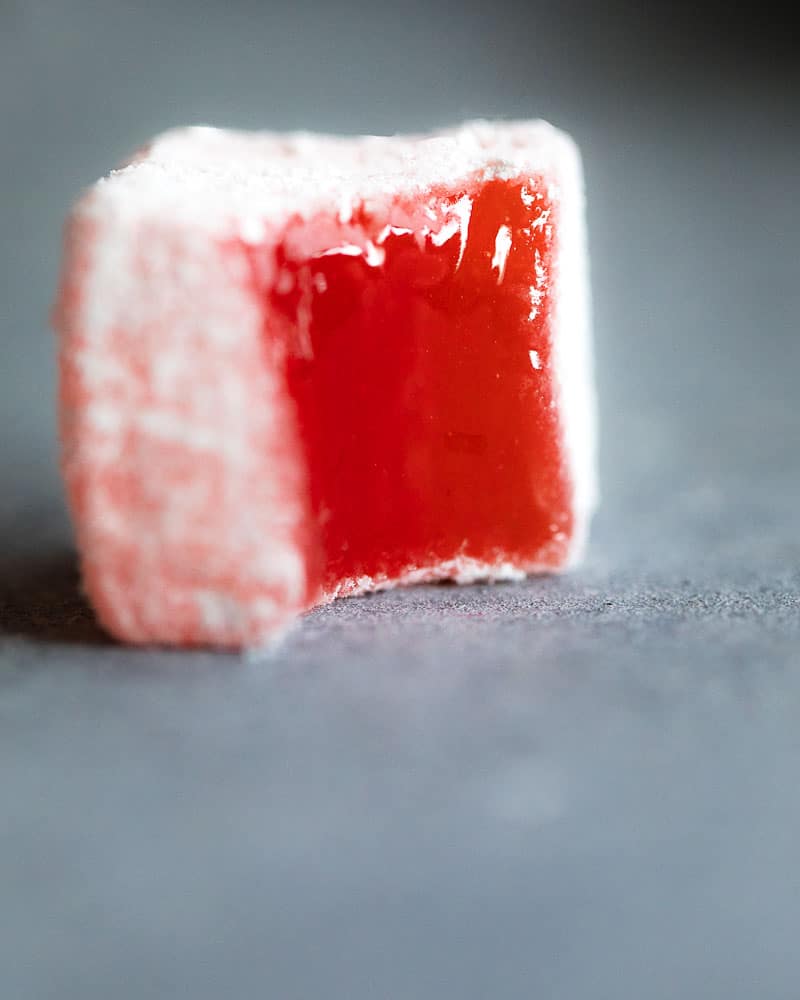
🍨 Other Delicious Turkish Desserts
That's it! I hope this guide gives you all the confidence you need to attempt this recipe. It is truly special.
I'd like to end with a Turkish saying that perfectly describes lokum: "tatlı yiyelim, tatlı konuşalım", which translates into "eat sweet and talk sweet"... I wish you many joyous conversations with loved ones next to a bowl of Turkish delight.

Looking for other Turkish dessert recipes? Try:
- Zerde: Turmeric Rice Pudding from the Ottoman Palace
- Pestil: Homemade Fruit Rollups with Nuts
- Kabak Tatlısı: Traditional Turkish Pumpkin Dessert
- Easy Baklava with Phyllo
Did you make this Turkish delight recipe? I'd love to hear about it! Please comment and leave a star🌟 rating below. This helps me run Aegean Delight and I always appreciate it 🙂
Print📖 Recipe

Authentic Turkish Delight Recipe from Narnia
- Total Time: 2 hours 40 minutes
- Yield: 40 ~1-inch cubes 1x
- Diet: Vegan
Description
With the help of food science, this authentic Turkish delight recipe from Narnia is as close to foolproof as a confectionery recipe can get. Perfectly chewy and sweet, "lokum" is traditionally vegan & gluten-free. Read on to find out its fascinating history, as well as all the key tips and troubleshooting suggestions for Turkish delight.
Ingredients
For Lokum:
- 350 g (scant 2 cups) white sugar (See Note 1)
- 175 ml (¾ cup) water (for syrup)
- 1.8 g (¼ teaspoon) citric acid (See Note 2)
- 70 g (½ cup + 1 tablespoon) cornstarch
- 500 ml (2 cups + 5 teaspoons) water (for cornstarch)
- 1 ½ teaspoons rosewater (See Note 3)
- 10 drops of red food color (See Note 4)
For Cutting:
- 30 g (¼ cup) cornstarch
For Dredging:
- 80 g (⅔ cup) cornstarch
- 45 g (⅓ cup) powdered sugar
Notes on the Ingredients:
- Make sure the sugar is the regular white variety as the less processed yellow-looking ones will make it difficult to judge the final steps of this recipe where we partially depend on the color.
- You may substitute citric acid with either the same volume of cream of tartar, or x12 the volume of lemon juice. 1 tablespoon of lemon juice roughly equals ¼ teaspoon of citric acid. However, unlike citric acid or cream of tartar, lemon juice will impart some flavor to your Turkish delight.
- Rose is an acquired taste. Therefore, to some, too much rosewater in the delights may make them taste soapy or perfumy. If you believe you might be in this category, halve the volume of rosewater the recipe calls for and you'll get only the slightest hint. As written, the rose flavor in this recipe is quite muted—but certainly there to compliment the sugar. Feel free to increase the amount if you wish to have a more robust flavor. Not a rosewater fan at all? Try substituting with extracts: orange, mandarin, pomegranate, lemon, and mint are very common flavorings in Turkey. You could also try yuzu, almond, maple, cinnamon, root beer... sky is the limit. Be careful as extracts are often stronger than rosewater in the same amount. At least halving the volume would be a good idea.
- The intensity of food colors varies widely from brand to brand. I used Watkins (liquid), and the initial super bright red color got much paler a few days after lokum set—so you may want to go overboard with how much you add or use another brand in order to have a deep red color.
Instructions
1. Add the sugar, citric acid, and water into a heavy-bottomed pan and mix until the sugar dissolves.
2. Bring the mixture to a boil on high heat, then lower the heat down to a simmer and wait until the syrup reaches 250°F (hard ball stage, See Note 1). Make sure to adjust this temperature for your kitchen's altitude and observe the pan closely—a clipped candy thermometer will give the most reliable results. This should take 15-30 minutes depending on your stove's heat output.

3. Meanwhile, prepare the cornstarch mixture by adding cornstarch and water to a jar. Close the lid and shake vigorously until there are no visible lumps of starch. Alternatively, thoroughly mix in a separate bowl.
4. Once the syrup reaches 250°F, turn off the heat and gradually add the just-shaken cornstarch mix into the pan, whisking continuously.

5. When all the cornstarch is incorporated, turn the heat on to medium-low and continue whisking until gelation. It should only take a few minutes for the mixture to thicken.
6. Once it’s thickened, put the heat on low to simmer, and make sure to mix it (See Note 2) about every 6-7 minutes to prevent it from sticking to the bottom. Be careful as the thickened mixture may splatter. Continue this process for 1-2 hours.
7. Prepare a mold by spreading a small amount of neutral oil into a container (See Notes 3 & 4).
8. To judge whether the mixture is done cooking, look for a relatively thick—but not gloopy—texture and a medium-dark shade of amber. Around the 1, 1 ½-hour mark, the mixture is usually very close to being done. This timeframe will depend on a variety of factors such as pan width & material, changing the ingredient amounts to make more/less lokum, and the burner's heat output. It can go up to 2 hours+, so make sure to judge by texture and color. At this final stage, you may also have to start stirring more frequently, about every 2 minutes.

9. When the Turkish delight is done cooking, turn off the heat, and add the rosewater and food coloring. Mix, pour into the container, and set aside at room temperature for at least 5 hours—preferably a full day especially if you’re somewhere hot and humid.

10. The next day, sprinkle cornstarch into the container then cut out a strip from the edge so that you can remove the entire slab. Sprinkle with more cornstarch, then cut into cubes.

11. Once they are cut, dredge the cubes in a mixture of cornstarch and powdered sugar.
12. To maximize the experience, serve with Turkish coffee and water on the side, which is the most common way people consume it in Turkey. Sandwiching the lokum between plain biscuits like Biscoff (or Petibör in Turkey) is really popular as well. These also make a great gift for Christmas. Enjoy!
Notes
1. This is the most crucial part of the recipe. I can't recommend a candy thermometer enough, but in case you're set on making do without, use the cold water test. We’re looking for the hard ball stage: meaning that once you pour a small amount of the simmering syrup into cold water—it should form a hard but malleable ball between your fingers. You need to be very quick in doing this, because the heating rate accelerates very rapidly after about 220°F because of the high sugar concentration in the syrup. Anywhere up to 260°F is okay, but go above this and you will get hard candy without realizing after 2+ hours of cooking.

If you are using a candy thermometer, testing it on boiling water to ensure it works correctly is not a bad idea. Additionally, make sure to factor in the altitude of your kitchen. For instance, if you are making this in Denver, CO, you'll be looking for 240°F instead 250°F. Each 500 ft increase in elevation causes water to boil at 1°F lower.
2. Make sure to be gentle while stirring after gelation. Any forceful whisking may cause the starch chains to disintegrate, causing a thinned-out consistency. However, a little thinning after the initial thickening is expected whenever cornstarch gelates.
3. A 5in x 7in glass container used for the original recipe yields 40 ~1-inch cubes of Turkish delight in one layer. However, feel free to use whatever size container is available to you as long as its surface area is smaller than 35 in2. Otherwise, the layer may be too thin.
4. Some prefer to line the container with plastic wrap instead of using oil. While this will help in removing the slab of lokum, it also creates numerous creases on the surface. Therefore I don't prefer it.
5. Store Turkish delights in the refrigerator covered with all the leftover cornstarch & powdered sugar mix from dredging. Prior to serving, make sure to bring Turkish delights back to room temperature. Consume within two weeks for best results.
6. Each 1-inch Turkish delight cube is approximately 45 calories (almost all from carbs). Note that this nutrition information is an estimate provided by Cronometer.
- Prep Time: 10 minutes
- Cook Time: 2 hours 30 minutes
- Category: Dessert
- Method: Cook
- Cuisine: Turkish
Nutrition
- Calories: 45


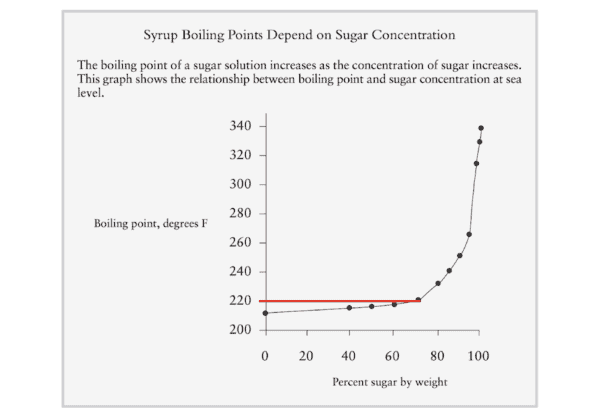
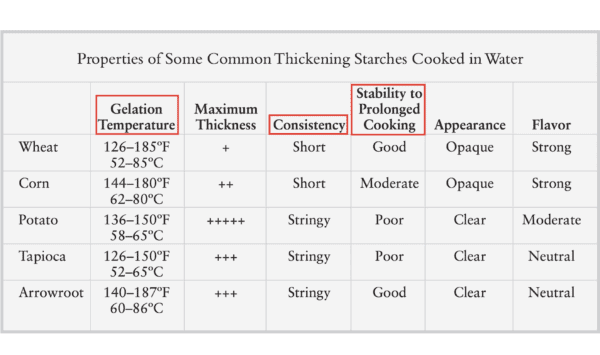
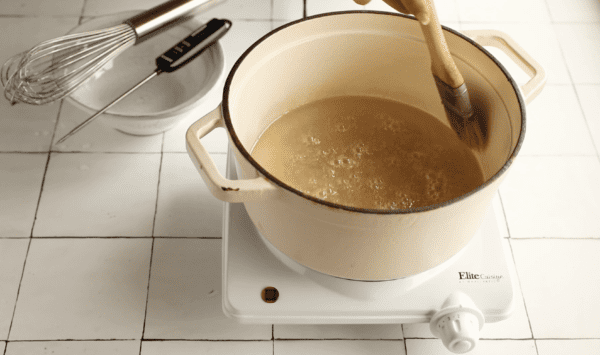
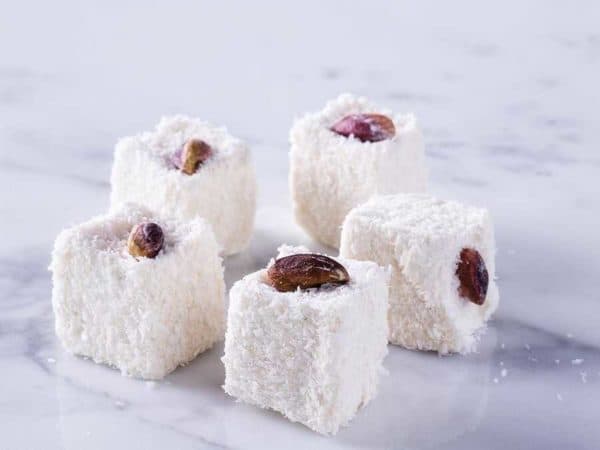
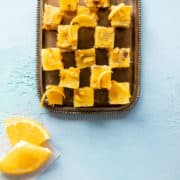

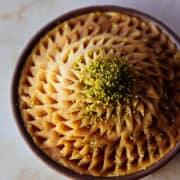
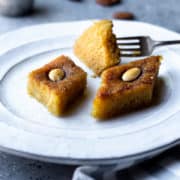

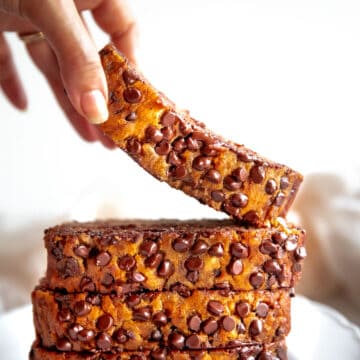

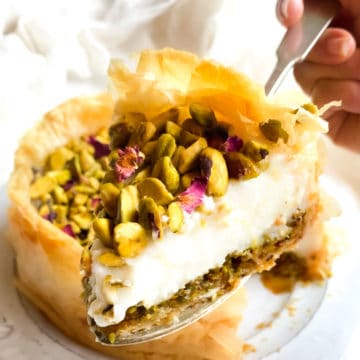

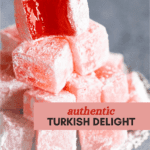
Hayriye Koz
I live in Turkey, there are many kinds of Turkish delight here. The most beautiful Turkish delight is definitely very, very fresh. I always buy my delight from the delight master. Thank you very much for your article about Turkish delight. looks yummy
Gonul
Thanks so much for your lovely comment, Hayriye! I agree, the best Turkish delight comes from small local lokum shops 🙂
Daniela
Im vegan, Im delighted to have found your site! Thank you very much!
Gönül
Thank you so much for the kind words, Daniela! 🙂
Shamani
Hi Gonul,
Firstly, please check that I am actually replying to you and not Hayriye. Because the setting of the reply section, something about it doesn't seem right.
And now to my question. I am considering using a silicon rose shaped mould for some of my Turkish delight. A chocolate mould that can withstand the temperature. Have you heard of anything like this before?? Would it work? Thanks.
Gönül
Hi Shamani, you are replying to Hayriye but that’s alright 🙂
If the mould can handle the temperature, I see no reason why it shouldn’t work although I’ve never done it myself! Let me know if you’ve tried it! Cheers
Michael
Made this recipe today, though everything is a little different here at 6,000 feet / 1,800m. Thank you for including the calculation for reducing sugar at altitude!
Gonul
My pleasure! High altitude cooking and especially baking seems trickier the more I look into it. Did everything work out well for you with this recipe?
Michael
Hi Gonul! I have had two minor problems with the recipe, not sure if they could be altitude related.
First it takes very long to set (10-20 minutes), I could see this being altitude as the sugar syrup starts at a lower temp.
Second, simmering the final mix for 90 minutes resulted it too goopy/solid of a result to flatten in the pan. Going to try 60 minutes next time. Hard to say that one could be altitude (I’d expect the opposite result), instead probably my technique or stove.
Even with the above problems the result was good I’m just trying to tweak it now for perfection. Thanks again!
Gonul
Hi Michael, thanks so much for taking the time to give feedback! I'll update the recipe to reflect your experience. Much appreciated!
Lizzie
Made this, it’s a good one to try. Really let it thicken, and even with non-processed sugar you can still get a good result. I doubled the batch & poured it into 5 separate tins for 5 different flavors (orange cream, raspberry, lime, lemon and mint). Really fun to see it come out - tastes good!
Gonul
Hi Lizzie, thanks so much for your feedback! Those flavors sound delicious. I'd love to try orange cream and raspberry next!
Mia
I would like to know the calories
Gönül
Hi Mia, it is about 45 calories (almost all from carbs) per each 1-inch Turkish delight cube. Please note that this nutrition information is an estimate provided by Cronometer. Cheers!
Pete
Really easy recipe to follow and understand, especially with your clarifications of the how's and why's and the background story is very interesting.
I have just made a batch and it went just as you described and as the video except for the final hour of simmering. Before it coloured into medium dark amber, it went gloopy and quite thick so that instead of pouring it into the container I had to spoon it so instead of the top surface being nice and level, it is lumpy and bumpy.
I think the problem might have something to do with the final simmering temperature. I had it on our smallest burner at its lowest setting but the mix was bubbling and despite stirring every 7 minutes it was catching on the bottom. I'd be grateful for any feedback.
Thank you
Gönül
Hi Pete, thanks so much for trying out the recipe!
Sorry the final step of the recipe didn't go as planned. It should definitely be pourable like the photo in the recipe and not gloopy to the point it needs to be spooned in! My guess is that the cooking duration may have been a bit too long / on too high a heat as you suggested. I've made it on each one of our four gas burners as well as an electrical hot plate. The timing always differs, but usually is still around the 1 1/2 - 2 hour mark for me. Stirring every 7 minutes on the lowest heat has always worked out in my experience, but again this would depend on the burner as well as the type of pan (I like to use a heavy-bottomed Dutch oven).
Was your pan wide? If so, water could have been evaporating too quickly.
What was the texture like after setting? Was it shiny where you cut and had a chewy bite? If so, it may still have turned out ok in the end!
Pete
Hi Gönül, thanks for replying. I used a 3 pint pan about 7 inch diameter at the top and 5 inch base (copper bottomed). I think it was the temperature being too high as the mixture was bubbling quite a lot and beginning to stick to the bottom (despite stirring every 7 minutes). I have ordered a simmer ring to go over the gas burner in order to reduce the temperature at the base of the pan. Next time I will do exactly the same but with the simmer ring, I'll let you know how that goes (might be a week or so).
The cut was shiny and the texture was OK if a bit softer than Turkish Delight I have bought, the consistency was smooth (no lumps) and the flavour (rose) good.
By the way, I didn't put any colouring in as my girlfriend doesn't react too well to food colouring, especially red, but the colour is a soft yellow ochre and not at all bad looking.
Thanks again
Gönül
I think the pan may be the culprit then, especially due to the copper bottom that conducts heat more efficiently than most other materials. Professional Turkish Delight makers in Turkey also use copper pans, but they are constantly stirred—99% of the time with an automated mixer. I would suggest using a heavy-bottomed pan like a Dutch oven if possible, if not hopefully the simmer ring will help.
Happy to hear your last effort wasn't a complete waste! The lack of food coloring is completely fine. In case you'd still like to add it, some specialty grocery stores sell more natural options or you could make your own with beet juice.
Best of luck with your next batch!
Ahmad
Hi Gonül,
I am Ahmad from Kashmir. I tried making it yesterday but didn't get good results. The final product was not having the desired consistency. It was somewhat chewy and hard to make cubes. I wish i had visited your blog earlier.
Gönül
Hi Ahmad, thanks for your feedback! I 100% feel your pain. I was in the same boat as you, tried out all the top recipes and none of them tasted right... more like chewy goop.
The worst part is that after trying them, most people dislike the texture and are turned off to Turkish Delight forever! I hope you get to try again and achieve the desired texture this time.
Cheers!
Hailey
It's fun. It's easy. It's delicious.
Gönül
Perfect description 🙂 Cheers!
Abigail
Hi Gönül! I have a question about the type of sugar I should use. Where I live right now, there is no granulated white sugar only caster sugar and raw sugar. Which do you recommend using for this recipe?
Gönül
Hi Abigail!
You can absolutely substitute granulated sugar with caster sugar. I wouldn't recommend raw sugar as it likely has molasses; this may affect the taste and/or the process negatively.
Hope that helps!
Xx,
Gonul
Ramon
Dear Gönül,
Your blog and explanations together with a wonderful interesting history of Lokum are the best available. I had made Lokum a few times in the past with less than desirable results rather like you had experienced in the past. Many of the online recipe or blogs are almost a copy and paste version of each other, some magically jumping tricky stages. You have really researched and perfected this so thank you. One of my problems had always been that just as the recipes say turn out and dredge with sugar and corn flour ( I am in the UK where we call cornstarch corn flour) only to find in a short time the hokum had weeped and soaked in all of that white powder. I researched this problem but never found and answer, I skied Greek people and that didn't know. But it seems as you rightly mention the drying process which is very important for the proper crystallisation to to finalise, I think now it must dry out for a couple of days before dredging and hopefully all will be well. I have tried to dry also in a very low oven and this did also work. O wonder of this a step kept secret by the main manufacturers ?
Gönül
Hi Ramon,
Thanks so much for your feedback and taking the time!!
I'm 100% with you about the copied recipes... I have no idea why the recipe that caught on is almost never ever used by Turkish manufacturers (cooking the starch separately). I've asked many independent confectioneries in my hometown and did at least 20 hours of research, never ran into that instruction.
About the weeping— the Turkish Food Codex (Türk Gıda Kodeksi) allows up to 16% water in finished Turkish delight. In my experience, the only times that weeping occurred were when I didn't wait to get to 250F. The percentage of water is directly related to the temperature, so a correct reading is essential. I recently got a professional ThermoWorks (not sponsored) thermometer and my batches are more uniform than ever!
If you still do get weeping, "dehydrating" in your oven's lowest temp for a few hours does the trick. Some manufacturers just leave them out for a couple of days to dehydrate for this reason as well.
Hope this helps!!
-Gonul
Geoffrey Schaller
Thank you for posting this! I'm looking to try making this, and am diligently reading ahead before my first attempt. A question about using Lemon Juice instead of Citric Acid: "You may substitute citric acid with either the same volume of cream of tartar, or quadruple the volume of lemon juice. 1 tablespoon of lemon juice roughly equals ¼ teaspoon of citric acid" - 1 Tablespoon is 12 times the volume of 1/4 Teaspoon, not quadruple. Is one Tablespoon accurate, or should I be using 1 Teaspoon (quadruple of 1/4 Teaspoon)? I'll be making this for a medieval feast, and would prefer to use as much "old time" ingredients as I can, as opposed to refined ones. Thank you!
Gönül
Hi Geoffrey, thanks so much for catching that mistake! You are absolutely correct—the note should say 12 times, not quadruple. So please use 1 tablespoon of lemon juice to replace 1/4 teaspoon of citric acid to make the recipe in its original quantity. Thank you again!
Natalie
Thank you so much for the tip on pre-mixing the cornstarch, I'm sure I'm not the only one to have learned this the hard way! Your recipe is THE ONLY one I've found to make a note of mixing the cornstarch with cold water BEFORE combining with hot ingredients. XD
It should be common practice, thanks for your extra effort Gonul! God Bless!
Gönül
I've definitely made the mistake of adding starch to a hot sauce before... 😀
Thanks so much for your review, Natalie! 🙂
Mila
Thanks for the detailed recipe! I haven't made candy before, so the notes were invaluable. However, the colour change never happened - it stayed a pale yellow from gelatinization until it was way too gloopy. I should have read the instructions more carefully and judged by texture. I stirred a bit of boiling water back in until it was pourable, and hopefully it'll turn out okay, but I was wondering if you knew what makes it turn a darker yellow? Is it just the maillard reaction? I didn't use citric acid in case that's involved, since I'm making coffee flavour.
Gönül
Thanks so much for trying out the recipe!! How did it turn out after adding boiling water at the end? Coffee flavor sounds delicious.
About the color--I'm not certain, but I do think it turns darker because of the Maillard reaction as you thought. If anything, citric acid should slightly inhibit the Maillard so leaving it out would likely not result in a paler color.
Wish I could help out a bit more, this is an interesting case!
Shane
The colour change never happened for me either. Followed all steps perfectly and seemed correct after gelation. But during simmering, it never changed colour and after an hour it was a goopy mess with pockets of caramelised mixture. Decided to take it off, flavour it and let it set. Not sure where I went wrong.
Gönül
Hi Shane, sorry your experience didn’t go as planned!
I wonder if the heat was too high and perhaps the mixture wasn’t continuously being mixed? That might explain how there were pockets of caramelized mixture at the end?
Cheers
H
I attempted to follow your recipe diligently, but somehow I created a lethal weapon... I notice a lot of questions about turkish delight that fails to set. In my case, it definitely set! It wouldn't pour, it would hardly come off the pan! (There were no lumps and no crystalization though, which is good!)
Is it possible to over-gellate the cornstarch while whisking? Did I over-reduce in the 1.5 hour simmer? I'm struggling to figure out what went wrong! I know this blog post is old and you might not be active, but if you are I'd appreciate any insight you might have!
Either way, thanks for this recipe, and in particular being the only person sane enough to suggest adding the cornstarch slurry cold prevents the infamous gross, lumpy mess!
Gönül
So sorry about the lethal weapon you’ve created! Your comment did make me laugh out loud, though, so apologies for that too! 🙂
It was probably reduced too far—which has happened to me before too! Don’t think it was an issue with over-whisking with the cornstarch, because that would likely make it looser rather than firmer (cornstarch bonds loosen if you go past the sweet spot and agitate too much).
Hope you’ve tried it again since then, don’t give up! Cheers
Rainbouw
Hello, first, a very very big thank you for such a good and detailed recipe.
Yesterday i made lokum ( for my sister as a gift for her birthday) and i must tell you that it is delicious. I spend about 1 hour and a half and it all went perfect. ( made with vanilia extract and walnuts)
I have only one question
When it was time to take it out from plate it was quite difficult, i put oil in it but it still didnt come out easily. How much oil do you pour into so the lokum dont stick on a plate?
Thank you
Gönül
Hi there! So glad you’ve enjoyed it 🙂 vanilla and walnuts sound delicious in this!
I’d say in the photo/video with the glass container where I’ve poured the lokum into—haven’t used more than one teaspoon of oil. I did go through the sides of it with a small sharp paring knife the next day to make it come out easier. Perhaps you could try that as well?
Cheers!
Ellene
Hello. I know I'm really late to the comments here but any advice would be fantastic . I love how concise you've been thank you . I tried to follow the instructions to a T. Took off the heat at 250F - I did find it took a while to get there and maybe I took it off the boil to simmer too quickly as it stayed around 230 for a few mins. Once it got to 250 i took it off the heat straggt away and I added the cornflour mixture it went gelatinous as expected but i found it thinned more than i thought it would ( i told myself to trust the process ) and then took around 2.5 hrs to get to the stage where it was amber , thick but still pourable. It probably got to that stage around the last half hour and I took it off when it looked maybe a little less thick than your video as I was worried it'd been cooking too long ! The Turkish delight has set rather chewy - not hard- but definitely more stretchy and tough . Where do you think I could improve ? Thank you again!
Gönül
Hi Ellen, thanks so much for trying out the recipe and sharing your experience! Sorry for my late response. It sounds like the lokum could have turned out less tough with less cooking time. Judging that time is the most difficult part of this labor of love I’m afraid… the most surefire way is to do what the lokum experts do: testing the stretchiness at multiple stages while cooking. The color test should yield similar results too, but that also is an approximation. Hope the final product you had made was still delicious! Cheers!
Kate
Do you have any advice for making the white variety that one often sees in the rolled "sultan" varieties? I'd love to roll fruit flavors with the milky variety. I think the slices would be very pretty. That layer sort of tastes like marshmallow to me, but I cannot find any reference to how it is made on line.
I am eager to try your recipe. Thank you for sharing it.
Gönül
Yes! They use soapwort extract (çöven otu) to make the “sultan” varieties. It foams up, incredible stuff! That’s my next project 🙂 It is unfortunately very difficult to obtain in the U.S. though. Not sure how realistic it will be to create for most people but I’ll certainly post it if it works out! Cheers!
Lee
Just out of curiosity what is your elevation? I’m in a city in the piedmont that’s just shy of 800ft. Would that affect how fast the lokum cooks after adding the cornstarch? I find that it mirror the texture of your video but not the color after about 30-40 min roughly. Perhaps my heating elements are calibrated higher but is that bad? The texture came out nice just doesn’t hold its stretch as nice as your video.
Gönül
I’m at sea level! Sorry, never tried making lokum at a high elevation… If the issue was the lack of stretch, that is likely due to taking it off the heat too soon. I would give it another 5-10 minutes, test a tiny piece, and try again. Hope this helps! Thanks so much for trying this recipe 🙂